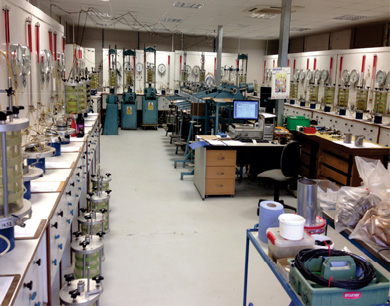Soil stabilizing polymers reduces road construction cost and saves time

During the past 70 years, a number of advanced countries have been researching and developing various polymeric admixtures in modified concrete mortars. Today, the USA, Germany, Japan have standard specifications for polymer modified mortars and concretes. However, in general, the construction industry has been a pedestrian in adopting technology.
SoilTech stabilizing polymers are elastomers and do not become brittle when cured. The elastomer is able to flex under load and unlike cement stabilization, will not crack under excessive loading. Another reason why sub-base and substrate layered works are virtually eliminated from the road design.
SoilTech MK III stabilizing polymer has been purposely designed to penetrate through the road's base layer, into the sub-base layer, via capillary action. This sub-base strengthening process is of significant importance as we are not only stabilizing the road's base layer, but also creating a semi-bound sub-base. From a road design perspective, a strengthened sub-base may negate the need for further layer-works. SoilTech, in many instances, transforms in-situ materials that would normally be classified as unusable or waste materials, into suitably modified aggregates, for use in base and sub-base layer construction.
With Smart Road Materials (SRM), one can;
- Reduce the consumption of quarry aggregate in conventional construction
- In many instances in-situ materials can be used
- Speed up construction time
- Reduce construction costs
- Dramatically reduce CO2 emissions
- Reduced maintenance – as long as the asphalt wearing course layer is maintained, the structural integrity of the road will be preserved, with the road pavement remaining rut free and eliminating the need for base or sub-base maintenance
The Resilient Modulus (MR) is a measure of subgrade material stiffness. A material's resilient modulus is actually an estimate of its modulus of elasticity (E). While the modulus of elasticity is stress divided by strain for a slowly applied load, resilient modulus is stress divided by strain for rapidly applied loads – like those experienced by typical roads. This critical relationship of structural strength and high yield strain (elastic modulus), differentiates SoilTech Mk. III polymer technology from conventional cement stabilization.
Structural strengths achieved with SoilTech polymer stabilization, exceed international single axle loading (80kN) standards by several hundred percent. A further major design benefit of SoilTech polymer, is the fact that although very impressive load bearing strengths are achieved, the elastomeric properties of SoilTech also provides unsurpassed tensile performance, for road stabilization. Engineers are now able to reduce the number of supporting layers, traditionally used to support conventional rigid or flexible pavement designs.
NBM&CW December 2016



















